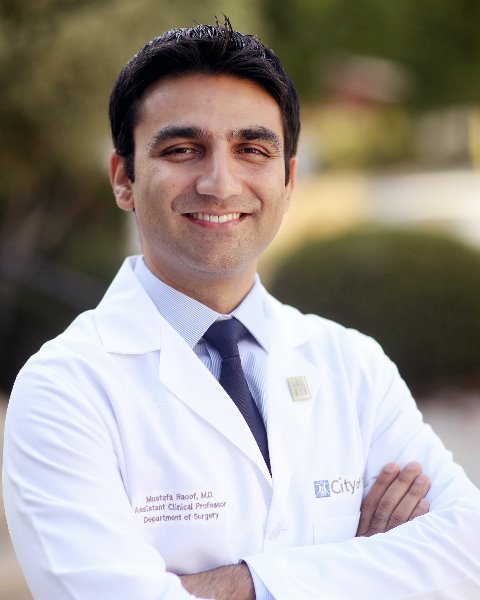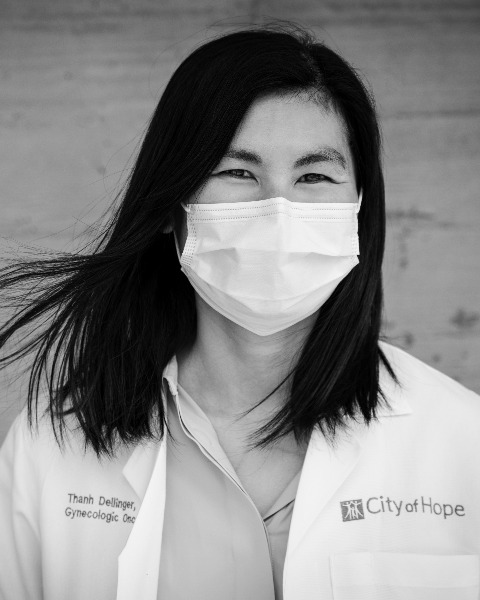PSM
11: Multicenter Dose-escalation Phase 1 trial of Mitomycin C Pressurized Intraperitoneal Aerosolized Chemotherapy in Combination with Systemic Chemotherapy for Appendiceal and Colorectal Carcinomatosis: Interim Results

Mustafa Raoof, MD, MS
Assistant Professor
Division of Surgical Oncology, City of Hope National Medical Center, Duarte, CA
Duarte, California, United States
Mustafa Raoof, MD, MS
Assistant Professor
Division of Surgical Oncology, City of Hope National Medical Center, Duarte, CA
Duarte, California, United States
Mustafa Raoof, MD, MS
Assistant Professor
Division of Surgical Oncology, City of Hope National Medical Center, Duarte, CA
Duarte, California, United States- MF
Marwan Fakih, MD
Professor
City of Hope Comprehensive Cancer Center, Duarte, United States 
Kevin M. Sullivan, MD (he/him/his)
Clinical Fellow
Department of Surgical Oncology, City of Hope National Medical Center, Duarte, CA
Pasadena, California, United States- PF
Paul Frankel, PhD
Professor
City of Hope Cancer Center, United States - TS
Timothy Synold, PhD
Professor
City of Hope Cancer Center, United States - IP
Isaac B. Paz, MD
Clinical Professor
Department of Surgical Oncology, City of Hope National Medical Center, Duarte, CA, United States 
Yumon Fong, MD
Professor
Department of Surgical Oncology, City of Hope National Medical Center, Duarte, CA
Duarte, CA, California, United States- SC
Sue Chang, MD
Associate Clinical Professor
City of Hope Comprehensive Cancer Center, Duarte, United States - SC
Sarah Cole, PhD
Staff Scientist
City of Hope Cancer Center, United States - SY
Susan Yost, PhD
Staff Scientist
City of Hope Cancer Center, United States - ME
Melissa Eng, BSN
Clinical Research Nurse
City of Hope Cancer Center, United States - RT
Raechelle Tinsley, B.S., CCRP
Clinical Research Coordinator
City of Hope Cancer Center, United States - LH
Larry Hernandez, BS
MultiCtr Clin Research Monitor
City of Hope Cancer Center, United States - JJ
Jeremy Jones, MD
Assistant Professor
Mayo Clinic Jacksonville, United States - RW
Richard L. Whelan, MD
Professor
Northwell Health, United States - DD
Danielle DePeralta, MD
Attending physician
Northwell Health, United States - AM
Amit Merchea, MD
Assistant Professor
Mayo Clinic Jacksonville, United States 
Thanh H. Dellinger, MD
Associate Clinical Professor
City of Hope Cancer Center
Duarte, California, United States
Abstract Presenter(s)
Submitter(s)
Author(s)
Peritoneal carcinomatosis (PC) from appendiceal or colorectal cancer has significant morbidity and limited survival. Pressurized intraperitoneal aerosolized chemotherapy (PIPAC) is a promising minimally invasive approach to treat unresectable PC. Mitomycin C (MMC)-PIPAC in combination with systemic chemotherapy has not been previously investigated.
Methods:
In this US multi-center phase I study of MMC-PIPAC, patients who were ineligible for cytoreduction after at least 4 months of first- or second-line systemic chemotherapy were included but those refractory to irinotecan-based chemotherapywere excluded. MMC-PIPAC was given every 6 weeks and systemic FOLFIRI was given every 2 weeks except the week of PIPAC. Dose escalation of MMC-PIPAC was performed at 4 dose levels – DL (7, 12.5, 19, and 25 mg/m2) in a 3+3 design. The primary endpoint was safety of MMC-PIPAC in combination with FOLFIRI and to establish the recommended Phase 2 dose.
Results:
A total of 13 patients (6 males: 7 females) have been enrolled; median age of 56y (range 31-71y). Three patients have completed DL1, 8 have completed DL2, and 2 have completed DL3. At the time of analysis, DL1 and DL2 patients were eligible for safety assessment. There was no dose-limiting toxicity (DLT) or surgical complication. Most common toxicities were: anemia (grade 1 in 3 patients), nausea (grade 1 in 2 and grade 2 in 3 patients), and diarrhea (grade 1 in 1 patient and grade 2 in 2 patients). In DL2, 3 patients were taken off study prematurely due to interruption in the availability of the study device (1 after 2 cycles, and 2 after 1 cycle). One patient on DL2 had grade 3 ileus and abdominal pain outside DLT window, therefore DL2 was expanded to enroll additional 5 patients with no further grade 3 adverse events over 3 cycles of PIPAC. Nine patients on DL1/2 who had at least 2 cycles of PIPAC were included in efficacy analysis. One patient had complete radiographic response, 1 had partial response, 7 had stable disease, and none had progressive disease. Histologic, laparoscopic, and biochemical responses were observed in most patients (Fig 1).
Conclusions:
Administration of MMC-PIPAC every 6 weeks is safe at 12.5 mg/m2 in combination with FOLFIRI. At DL1 & 2, histologic, laparoscopic, radiographic and biomarker responses were observed in most patients. Completion of the study will establish recommended phase 2 dose.
Learning Objectives:
- Upon completion, participant will be able to describe the role of PIPAC in colorectal and appendiceal cancer peritoneal metastases
- Upon completion, participant will be able to describe the safety data related to Mitomycin C PIPAC with systemic FOLFIRI
- Upon completion, participant will be able to describe the efficacy data related to Mitomycin C PIPAC with systemic FOLFIRI
